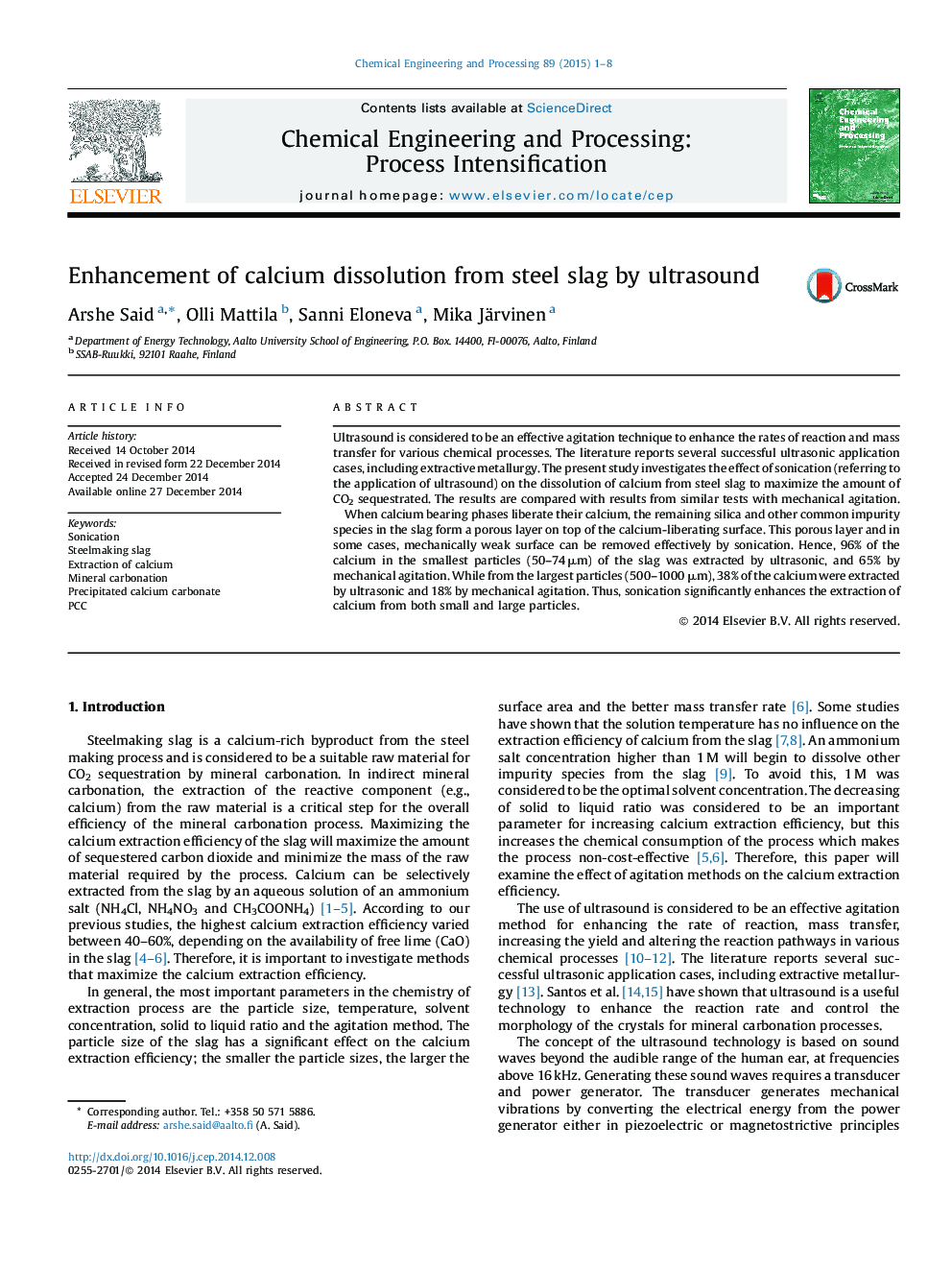| Article ID | Journal | Published Year | Pages | File Type |
|---|---|---|---|---|
| 7089983 | Chemical Engineering and Processing: Process Intensification | 2015 | 8 Pages |
Abstract
When calcium bearing phases liberate their calcium, the remaining silica and other common impurity species in the slag form a porous layer on top of the calcium-liberating surface. This porous layer and in some cases, mechanically weak surface can be removed effectively by sonication. Hence, 96% of the calcium in the smallest particles (50-74 μm) of the slag was extracted by ultrasonic, and 65% by mechanical agitation. While from the largest particles (500-1000 μm), 38% of the calcium were extracted by ultrasonic and 18% by mechanical agitation. Thus, sonication significantly enhances the extraction of calcium from both small and large particles.
Related Topics
Physical Sciences and Engineering
Chemical Engineering
Process Chemistry and Technology
Authors
Arshe Said, Olli Mattila, Sanni Eloneva, Mika Järvinen,
